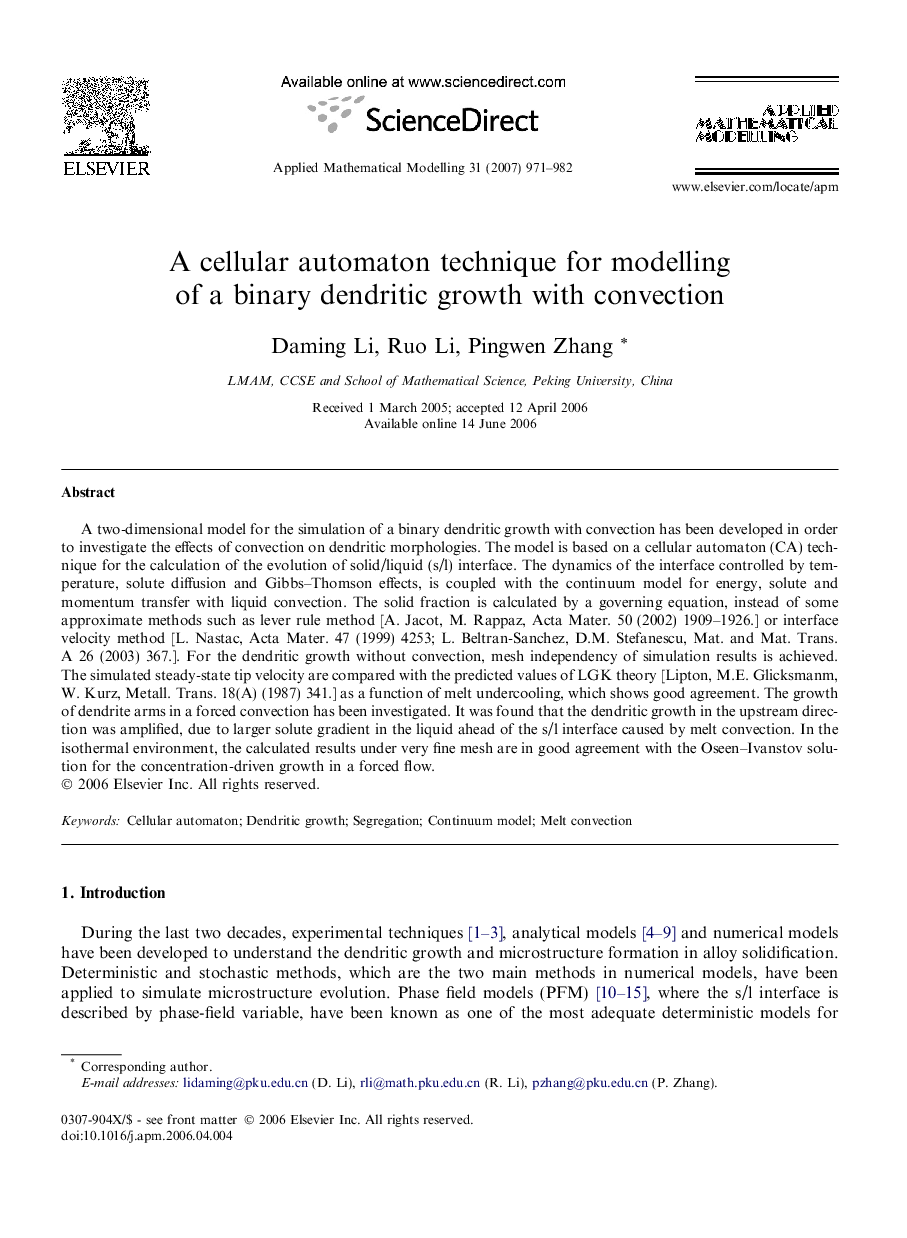| کد مقاله | کد نشریه | سال انتشار | مقاله انگلیسی | نسخه تمام متن |
|---|---|---|---|---|
| 1707098 | 1012500 | 2007 | 12 صفحه PDF | دانلود رایگان |

A two-dimensional model for the simulation of a binary dendritic growth with convection has been developed in order to investigate the effects of convection on dendritic morphologies. The model is based on a cellular automaton (CA) technique for the calculation of the evolution of solid/liquid (s/l) interface. The dynamics of the interface controlled by temperature, solute diffusion and Gibbs–Thomson effects, is coupled with the continuum model for energy, solute and momentum transfer with liquid convection. The solid fraction is calculated by a governing equation, instead of some approximate methods such as lever rule method [A. Jacot, M. Rappaz, Acta Mater. 50 (2002) 1909–1926.] or interface velocity method [L. Nastac, Acta Mater. 47 (1999) 4253; L. Beltran-Sanchez, D.M. Stefanescu, Mat. and Mat. Trans. A 26 (2003) 367.]. For the dendritic growth without convection, mesh independency of simulation results is achieved. The simulated steady-state tip velocity are compared with the predicted values of LGK theory [Lipton, M.E. Glicksmanm, W. Kurz, Metall. Trans. 18(A) (1987) 341.] as a function of melt undercooling, which shows good agreement. The growth of dendrite arms in a forced convection has been investigated. It was found that the dendritic growth in the upstream direction was amplified, due to larger solute gradient in the liquid ahead of the s/l interface caused by melt convection. In the isothermal environment, the calculated results under very fine mesh are in good agreement with the Oseen–Ivanstov solution for the concentration-driven growth in a forced flow.
Journal: Applied Mathematical Modelling - Volume 31, Issue 6, June 2007, Pages 971–982